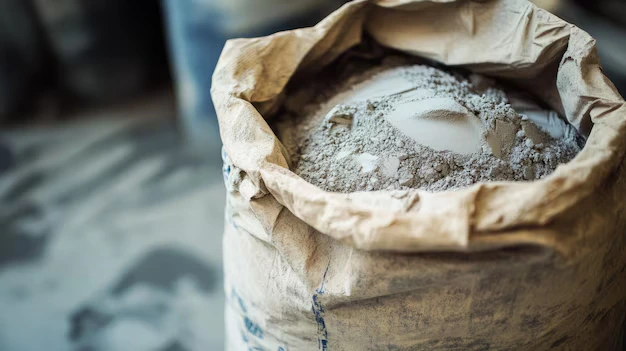What is refractory fireclay? It’s the industrial world’s ultimate heat-resistant warrior. This specialized fireclay material stands up to extreme temperatures and harsh industrial environments, serving as a critical component in sectors like steel, cement, and glass manufacturing.
The global refractories market speaks volumes: growing from 55.16 million tons in 2024 to a projected 67.12 million tons by 2029. This isn’t just growth—it’s a testament to fireclay’sincreasingly strategic role in modern manufacturing.
Fireclay isn’t just a material; it’s a performance solution. Its exceptional thermal resistance and durability make it the go-to choice for businesses seeking robust, long-lasting industrial linings and critical infrastructure components.
For forward-thinking manufacturers, understanding and leveraging refractory fireclay means staying ahead in a competitive, high-temperature world.
Ready to explore the depths of this remarkable material and discover where to find fireclay? Let’s dive into the technical marvel that’s reshaping industrial resilience.
Understanding Fireclay: A Brief Overview
Before we dive deeper, let’s start with the basics. Fireclay is a naturally occurring material rich in alumina and silica, making it incredibly resistant to high temperatures. What sets refractory fireclay apart is its ability to endure extreme heat, thermal shock, and chemical exposure, making it indispensable in industries like steel, cement, and glass manufacturing.
Its properties include:
High Thermal Resistance: Can withstand temperatures above 1500°C.
Durability: Long-lasting even under continuous exposure to heat and stress.
Plasticity: Easy to mold into desired shapes.
Common applications include:
- Lining furnaces, kilns, and reactors.
- Manufacturing fireclay bricks, tiles, and other refractory products.
- Domestic use in fireplaces and ovens.
But what’s the real significance of fireclay material for businesses? Let’s explore its industrial relevance and the latest trends.
Why Fireclay Matters in Today’s Industrial Landscape
- The Rising Demand for Refractory Fireclay
The Refractories Market was estimated to be 55.16 million tons as of 2024 and is likely to grow to 67.12 million tons by 2029 at a CAGR of 4% during the forecast period of 2024 to 2029, primarily due to innovations in material science and increased demand from energy-intensive industries. Companies are moving toward refractory fireclay-based sustainable refractories to maintain the efficiency of operations while achieving green manufacturing goals.
- Optimizing costs and processes for business impact
For business owners, using premium refractory fireclay is a strategic decision:
Energy Efficiency: High-quality fireclay linings can reduce energy consumption by up to 20%.
Extended Equipment Life: Furnaces and kilns lined with advanced fireclay material last 25–30% longer, cutting replacement costs significantly.
Reduced Maintenance: Lower thermal shock means less frequent repairs, minimizing downtime.
For example, a steel manufacturer using top-grade **fireclay bricks** reported saving millions annually due to reduced maintenance costs and improved production cycles.
Key Considerations for Choosing the Right Fireclay
1. Properties That Drive Performance
When selecting refractory fireclay, businesses must focus on:
- Thermal Conductivity: Ensures uniform heat distribution, critical for efficient operations.
- Alumina Content: Higher alumina levels offer better resistance to heat and wear.
- Flexibility: Adaptability to various industrial applications, from lining kilns to producing custom refractory components.
2. Industry-Specific Applications
Every industry has unique requirements:
- Steel and Cement: High-density fireclay bricks for withstanding prolonged high temperatures.
- Glass and Ceramics: Low-thermal-expansion fireclay for precise temperature control.
- Petrochemical Plants: Fireclay linings resistant to both heat and chemical corrosion.
By understanding these nuances, businesses can ensure they choose materials that align with their operational needs.
The Role of Ganeshas in Fireclay Solutions
As a leading name in refractory manufacturing, Ganeshas is redefining the industry with innovative solutions. Their portfolio includes a wide range of fireclay products, tailored to meet the specific demands of high-temperature industries. Why choose Ganeshas?
- Tested and certified fireclay material designed for durability and efficiency.
- Solutions tailored to unique industrial challenges.
- Products crafted to deliver high performance in demanding environments.
For businesses wondering where to get fireclay that meets industry standards, Ganeshas offers reliable, high-performance products.
Future Trends in Fireclay Usage
- Green Manufacturing
With stricter environmental regulations, industries are adopting fireclay material that is more sustainable. Low-carbon production methods and recyclable refractory fireclay products are gaining traction.
- Advancements in Material Technology
Emerging technologies are enhancing the heat resistance, durability, and adaptability of fireclay bricks and other refractory products. Businesses investing in these advancements can gain a competitive edge.
To Sum Up
For industries that rely on high-temperature operations, refractory fireclay is more than a material—it’s a strategic asset. It ensures efficiency, reduces costs, and supports sustainability goals. With innovative solutions from trusted names like Ganeshas, businesses can stay ahead in a competitive landscape.




